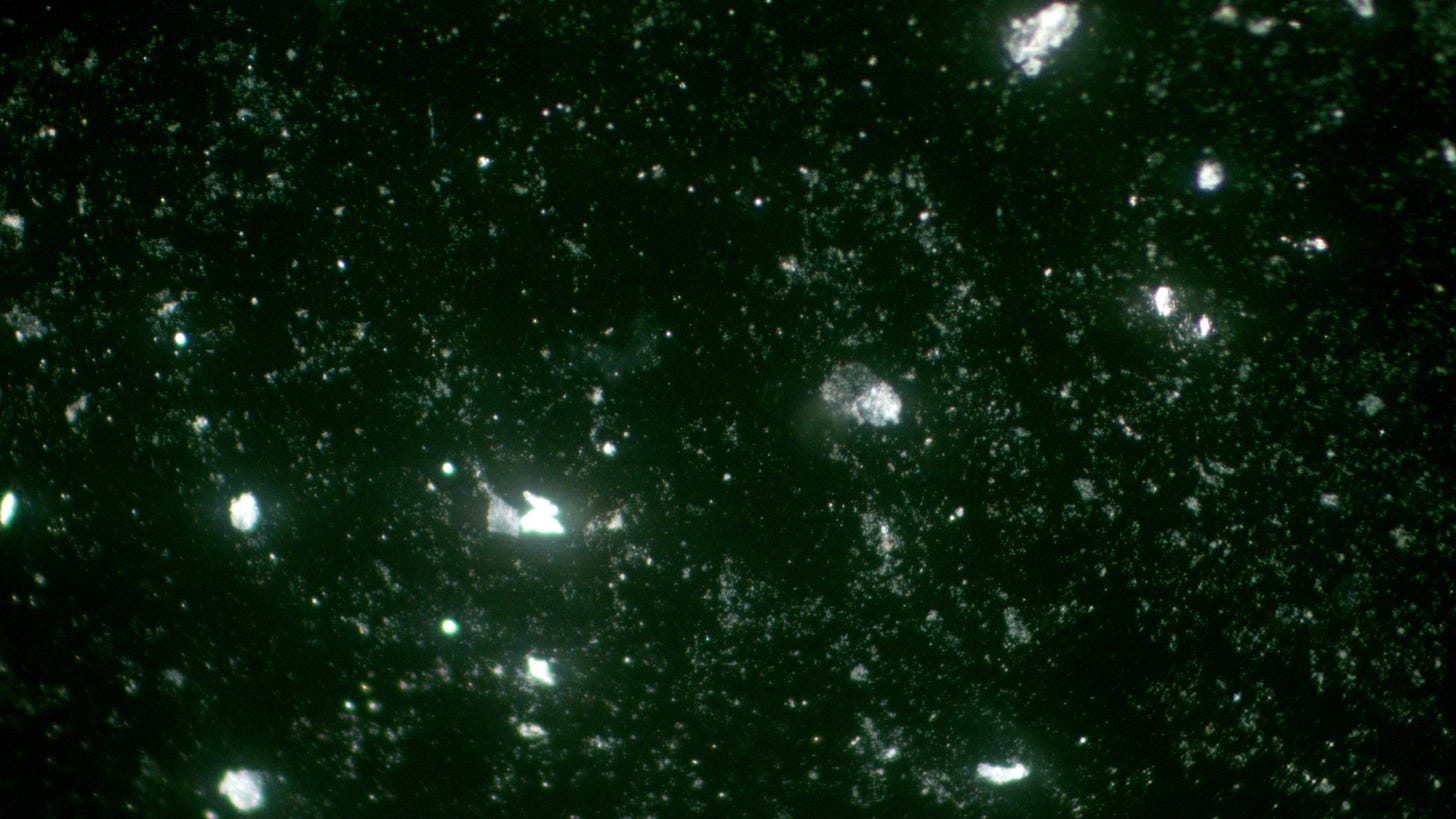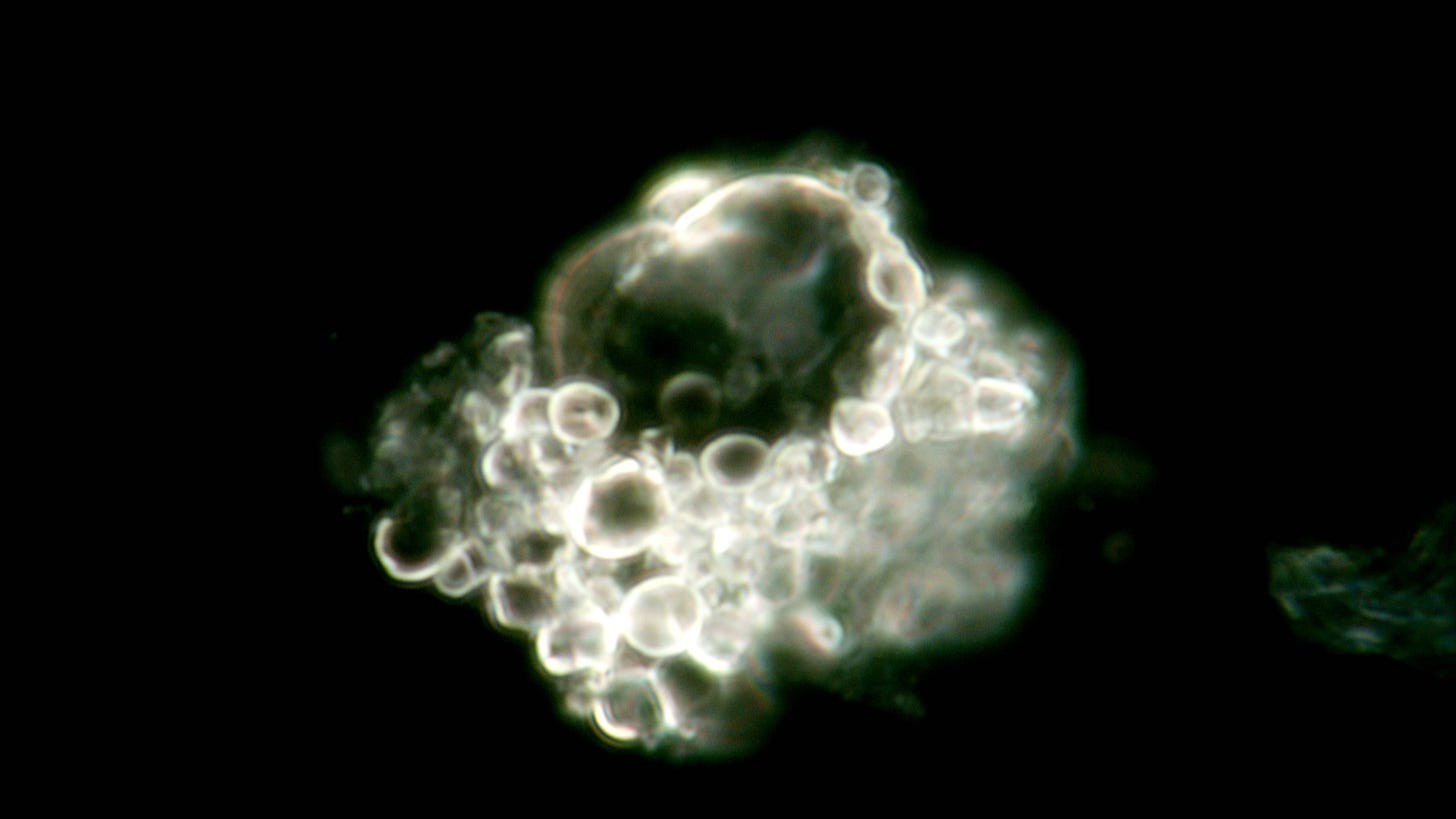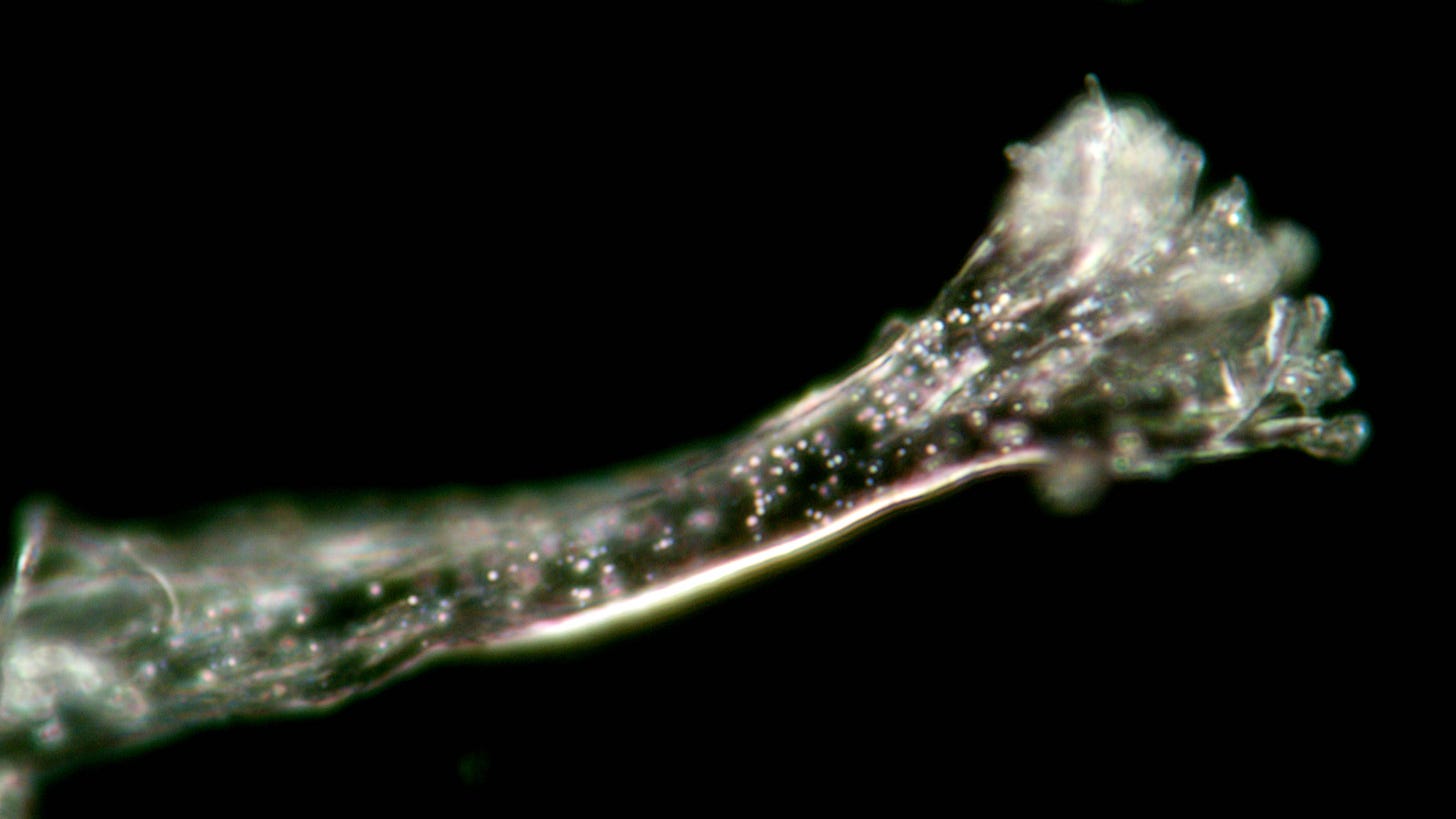The urine was simply left standing and examined using a dark field microscope without a centrifuge. The same structures can be found as can currently be found in the blood.
Let's take a closer look at the individual ingredients.
What follows is a colorful selection of images.
Taking sodium citrate is not a medical recommendation and is at your own risk. The dosage level was determined using a kinesiological test and usually varies between 1-5 grams - depending on the client.
This structure is usually referred to as a symplast and is indicated in standard German dark field microscopy as a metabolic disorder and/or a disorder of the acid-base balance. I only get a slight frown because these structures can be found in abundance in the snow and water. Where is the metabolism in snow? Cough...
No matter which therapist it is in the future, the prerequisite for a correct diagnosis will be knowledge of nanotechnology and artificial intelligence. Synthetic biological technology in our bodies is a fact.
And another new strand…
Complexly grown structures.
We can twist and turn as we please, the so-called symplasts are a huge collection of substances that should actually provide a wealth of pathological information, but they have simply been pushed aside in recent decades. Which means nothing else, that these hydrogels and other technology have been in our bodies for a long time - even if only slightly. Now that it's occurring in large quantities, we're starting to wonder what it is.
Hopefully not too late... In any case, we cannot afford to wait for others to provide explanations or solutions.
If you want to delve deeper into the subject, I can only recommend the Carnicom Institute's wealth of enormous material!










Hi Sam,
Some of the best microscopy work I have seen to date. Absolutely in awe. Your conclusions are solid too.
Just a wee bit envious of your skills to be honest. Would love to talk one day if that's ok.
Highest Regards,
matt.